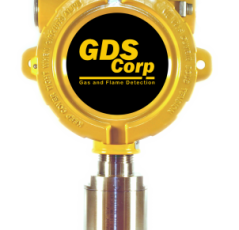A very lethal gas in many industrial settings, methane must be monitored to help facilities avoid fires or explosions. From natural gas pipelines to other industrial buildings, methane is one threat taken very seriously. To ensure the safety of workers, companies use a variety of technologically-advanced methane sensors to closely monitor all areas of a facility. Whether it’s a confined space or a large, open area where many workers may be present, investing in a methane gas detection system is well worth the money. If you are planning to do just this, here are some ways these systems operate.
Portable Methane Monitoring
Due to most industrial facilities having numerous confined spaces where workers spend time analyzing, installing, and repairing various types of equipment, methane monitoring is crucial for these areas. Since a gas buildup can occur in a matter of minutes in these areas, workers will have very little time to react in an emergency. However, to avoid these situations, companies now equip maintenance technicians and others working in these areas with portable methane gas detectors. Small and versatile, these detectors can be either handheld models, or perhaps ones made to be clipped to shirts or belts. In either case, workers using portable methane detectors can complete their tasks safely, while also having access to real-time data regarding gas levels.
Stand-Alone Sensing Technology
While for many years industrial plants, offshore drilling platforms, and other facilities relied on having multiple CH4 gas sensors installed throughout an area to monitor methane, today’s technology is moving more toward relying on stand-alone sensors. With this technology, only one sensor is needed to monitor a large area, and they can be programmed to monitor for other dangerous gases as well. Though the price tag on these methane gas sensors can run well over $10,000 or more, many companies feel they are making a smart investment in keeping their workers and facilities safe from disaster. Considered to be accurate, reliable, and long-lasting in various types of work environments, stand-alone sensors utilize state-of-the-art electronics to closely monitor gas levels.
Audible and Visual Alarms
Since a methane gas leak can occur in many different types of areas within an industrial facility, modern methane detection systems rely on multi-faceted alarm systems to alert workers to dangerous conditions. Therefore, systems are equipped with audible and visual alarms, which can be adapted to all work environments. For example, in areas where workers may be spread out over long distances, such as a pipeline, sirens can be very effective in signalling danger. However, in facilities where noise levels may be high and sirens would not be easily heard, visual alarms such as flashing lights can be used to keep workers safe.
Wireless Technology
Since modern detection systems use wireless technology to link to data networks, they not only send out real-time data 24/7, but also require little calibration. In addition to this, sensors can also be monitored by on-site personnel, as well as engineers in monitoring centers miles from the facility.

